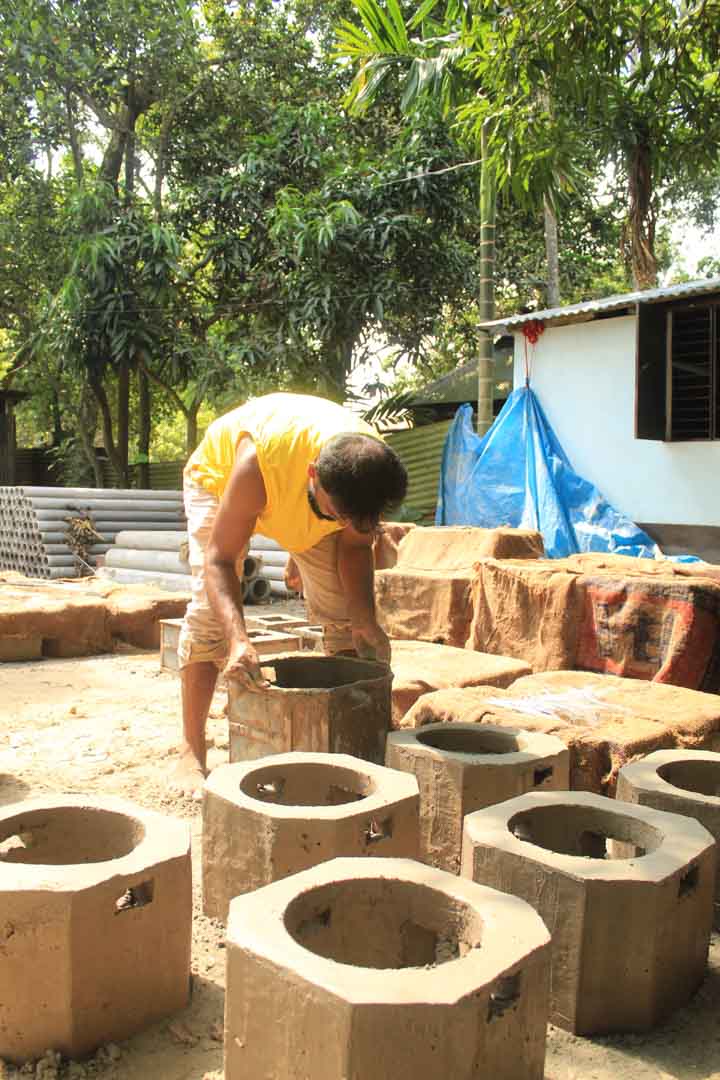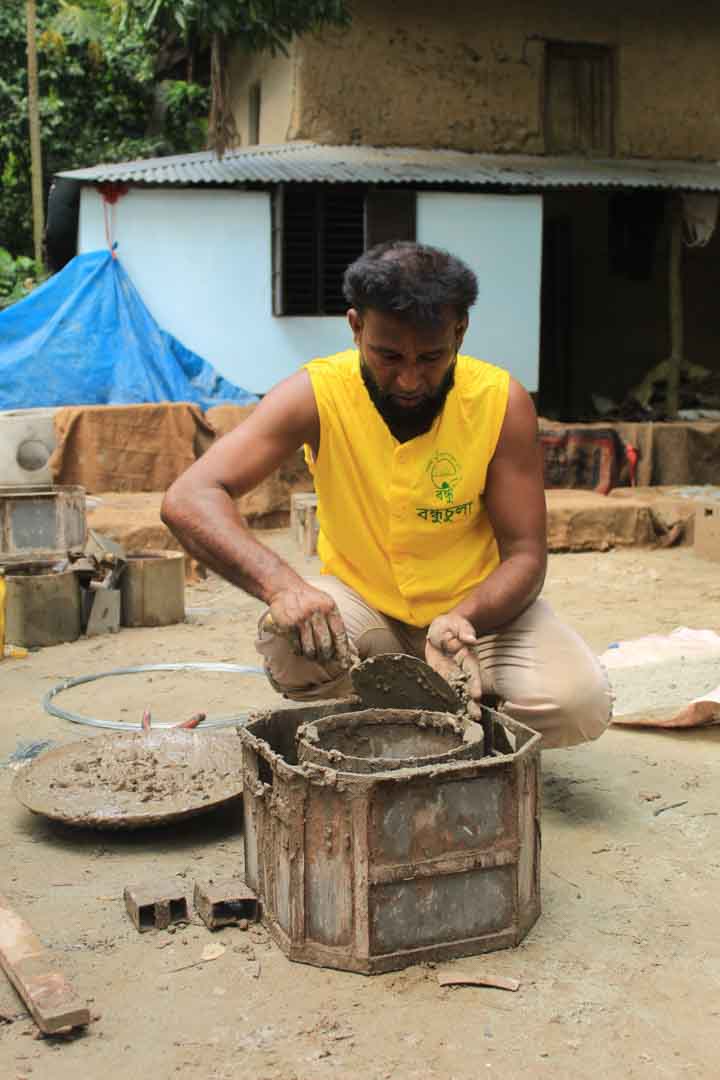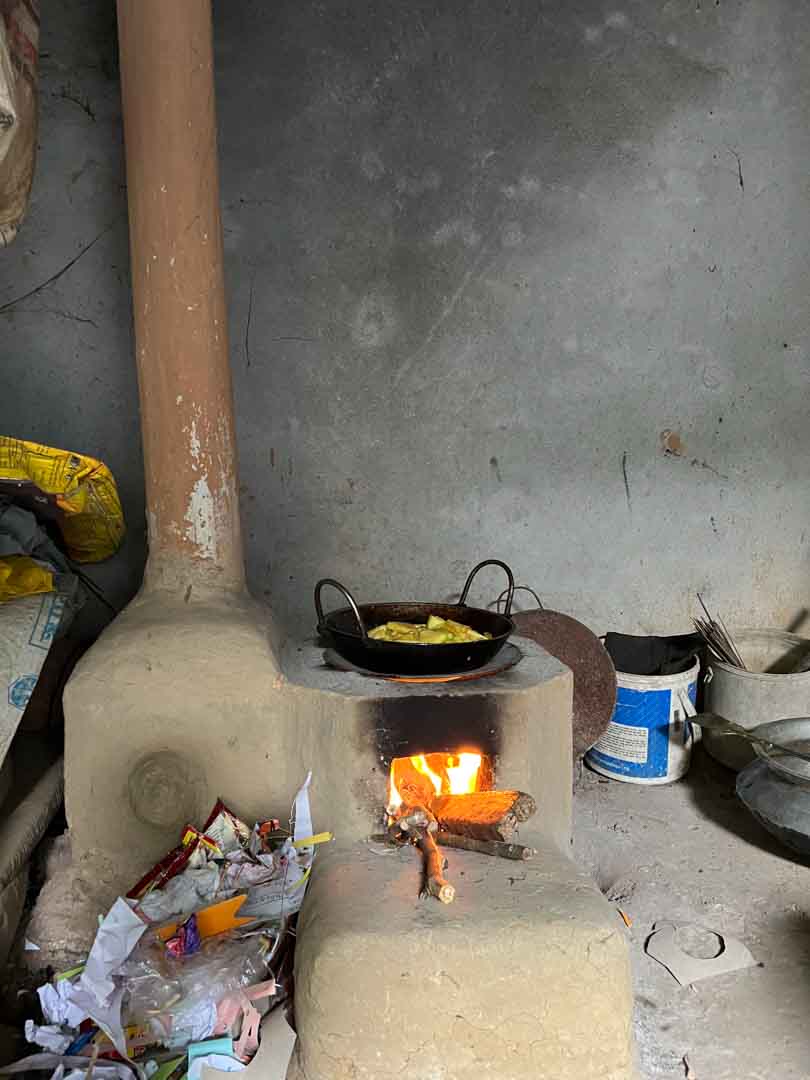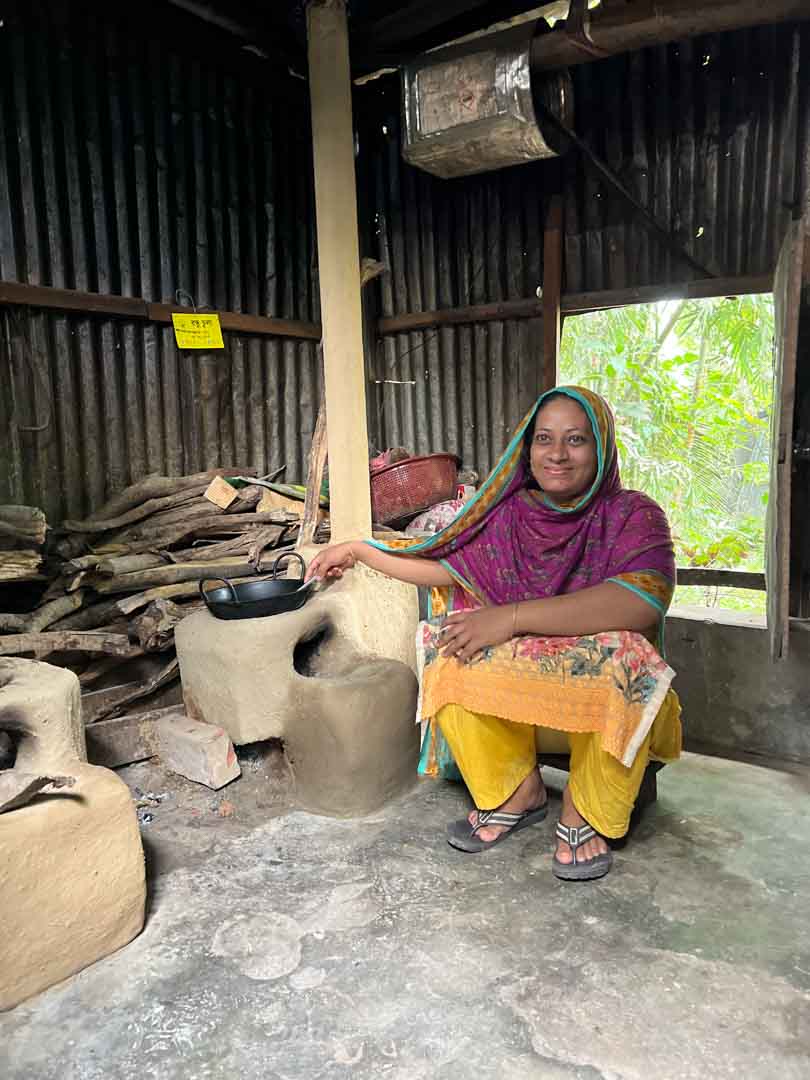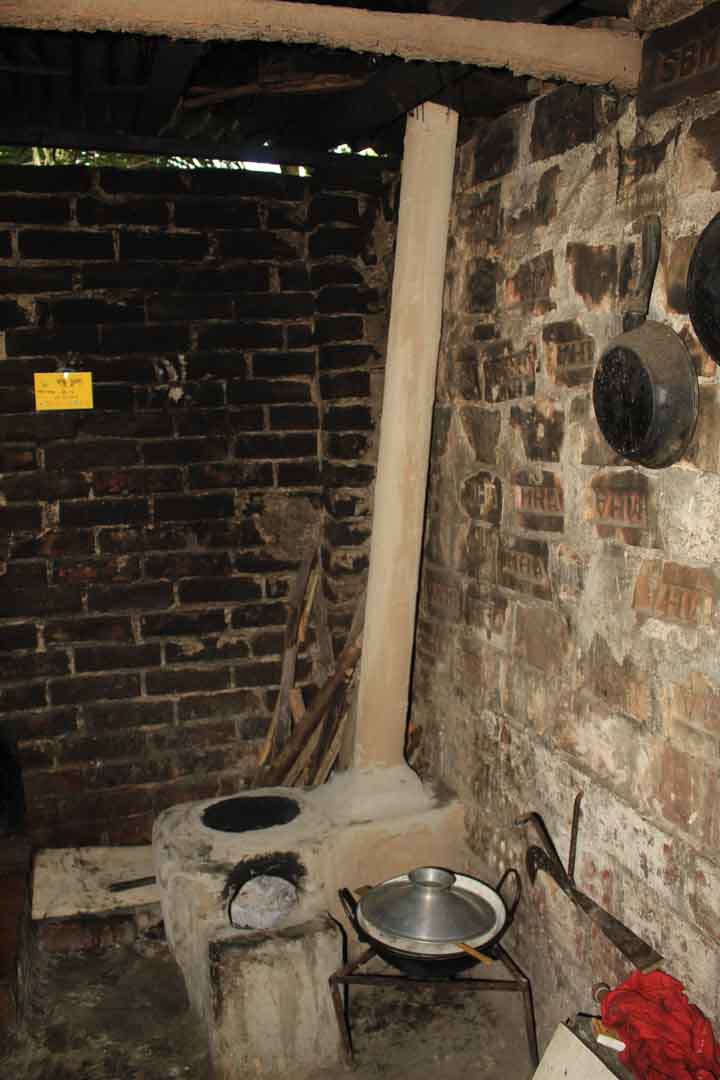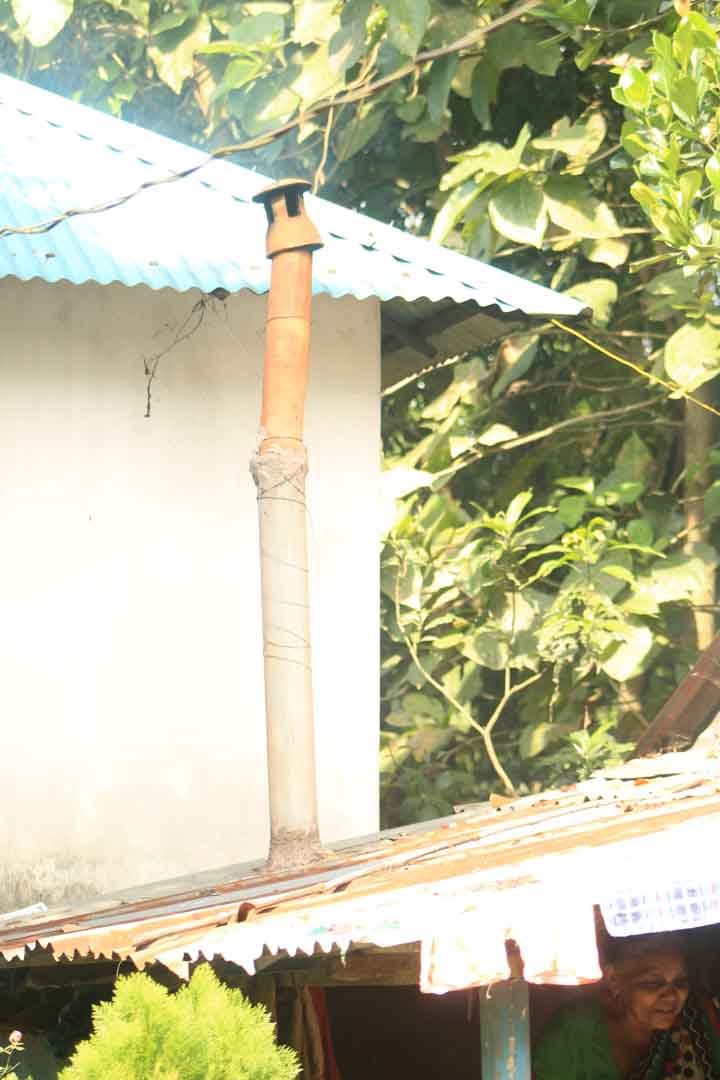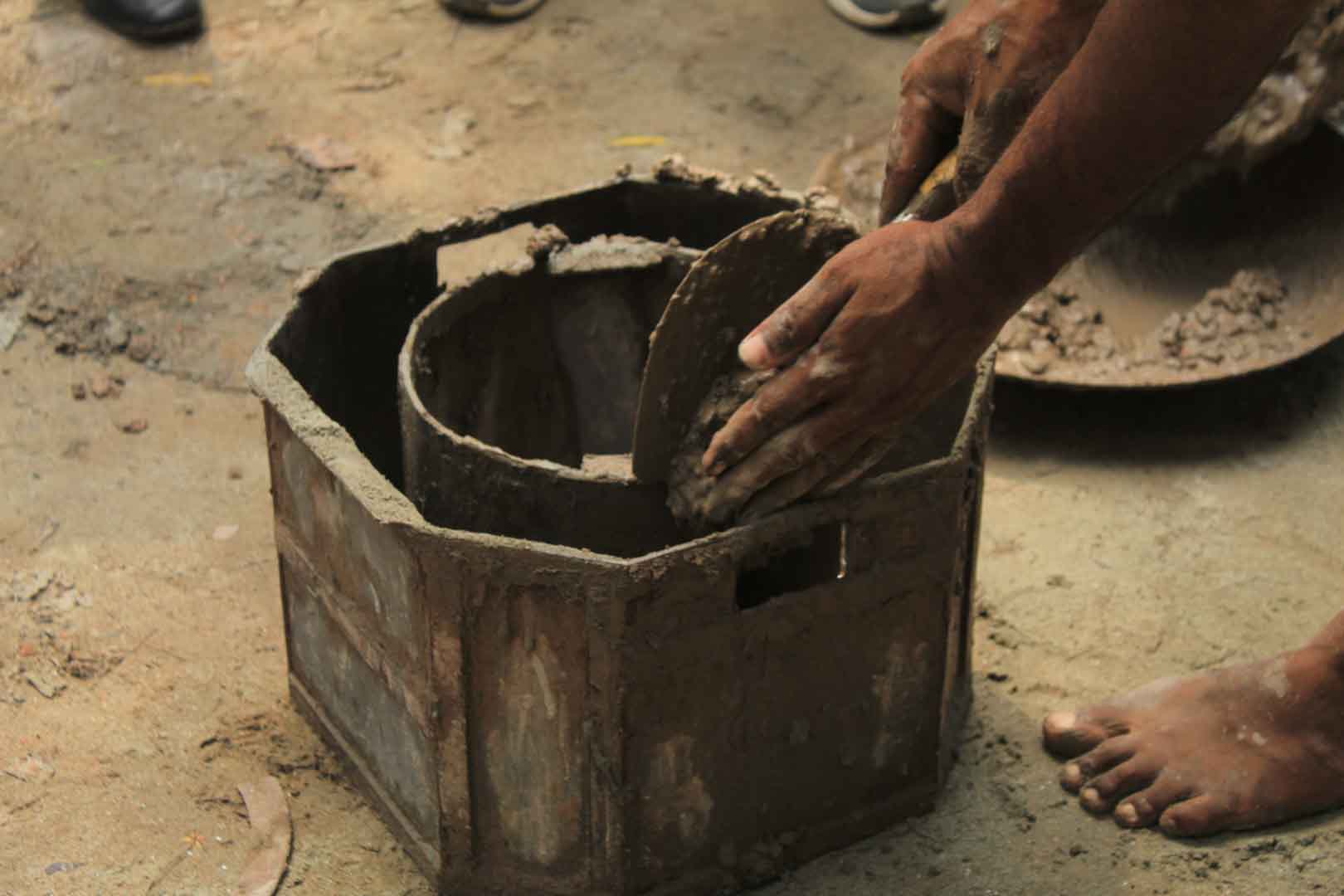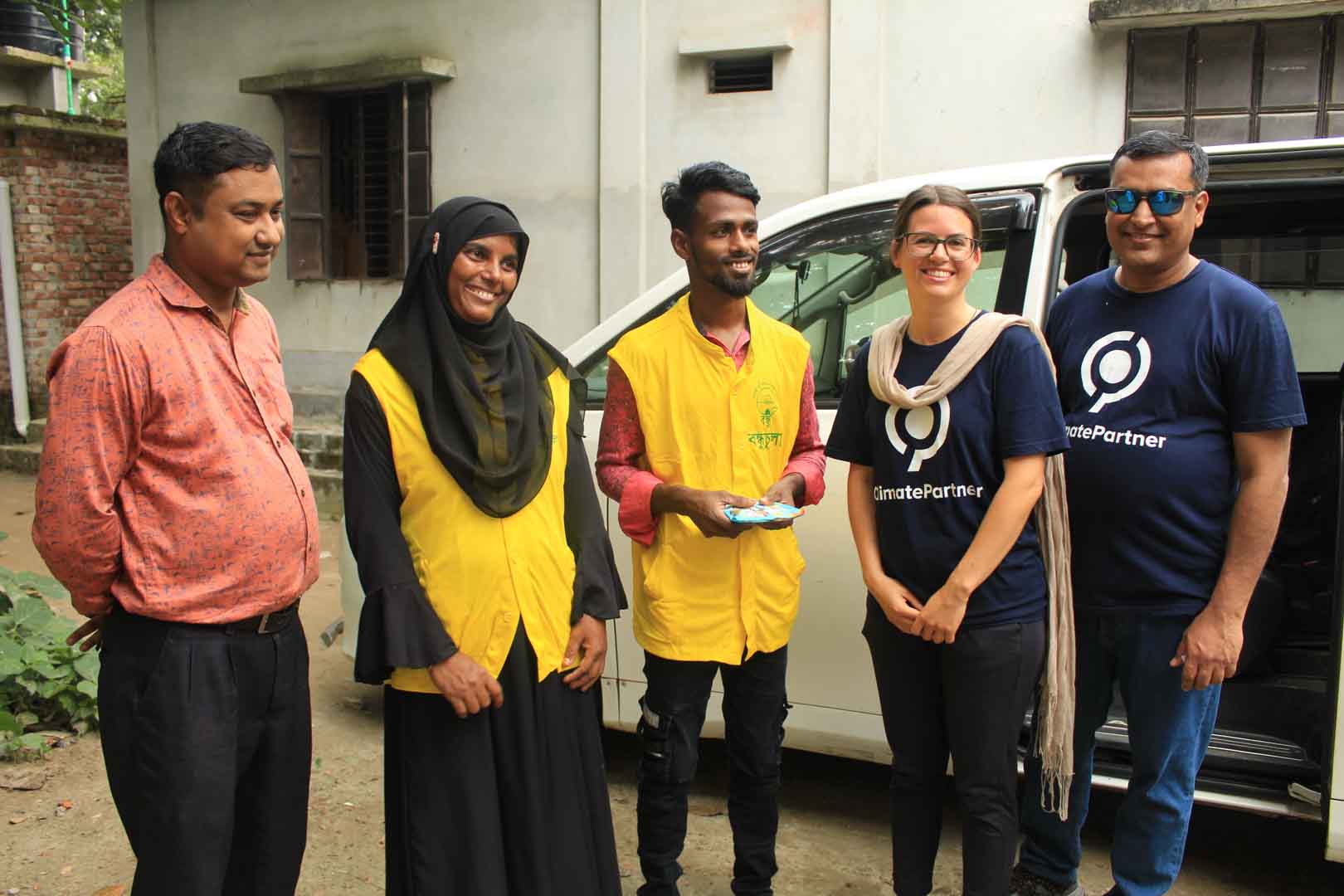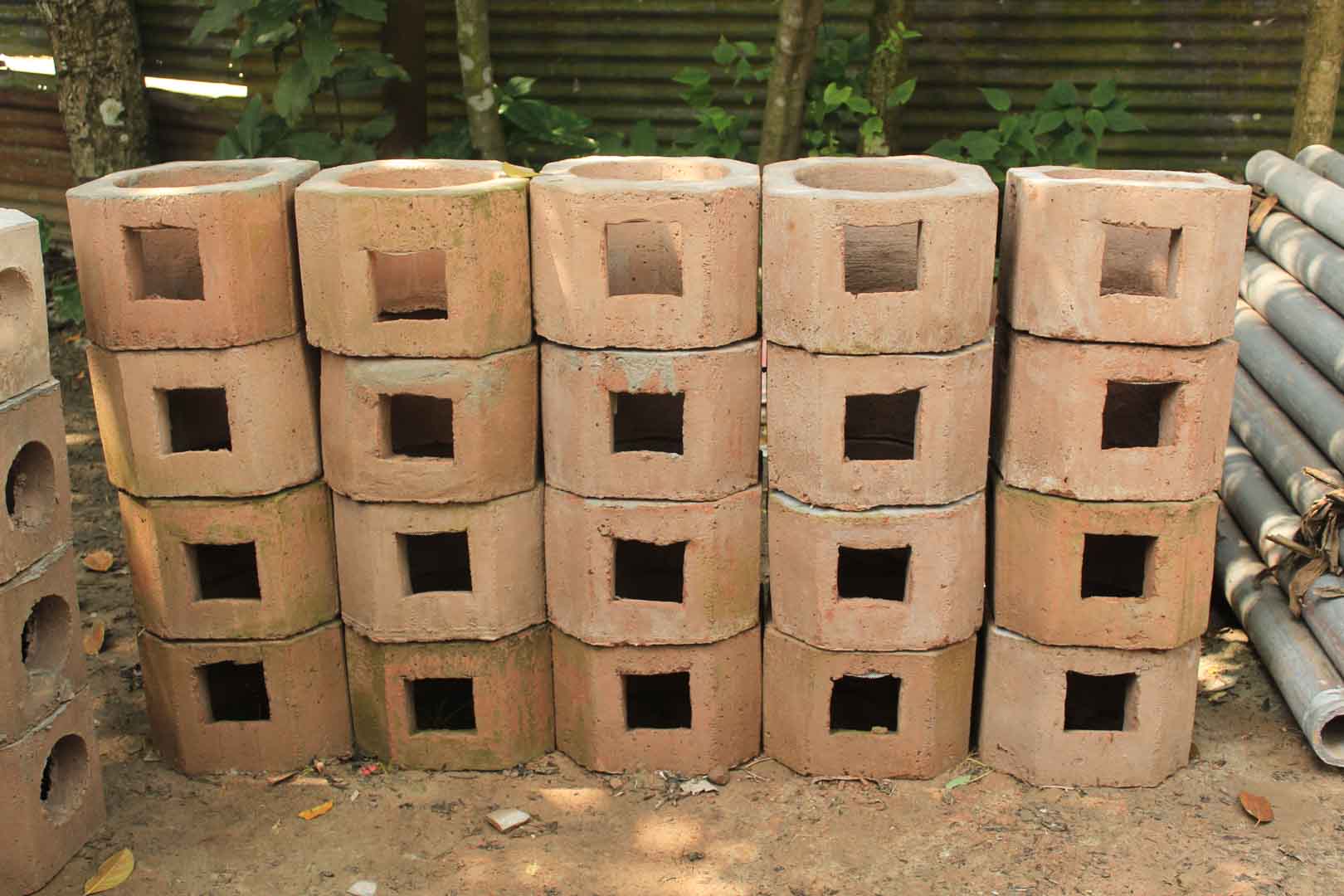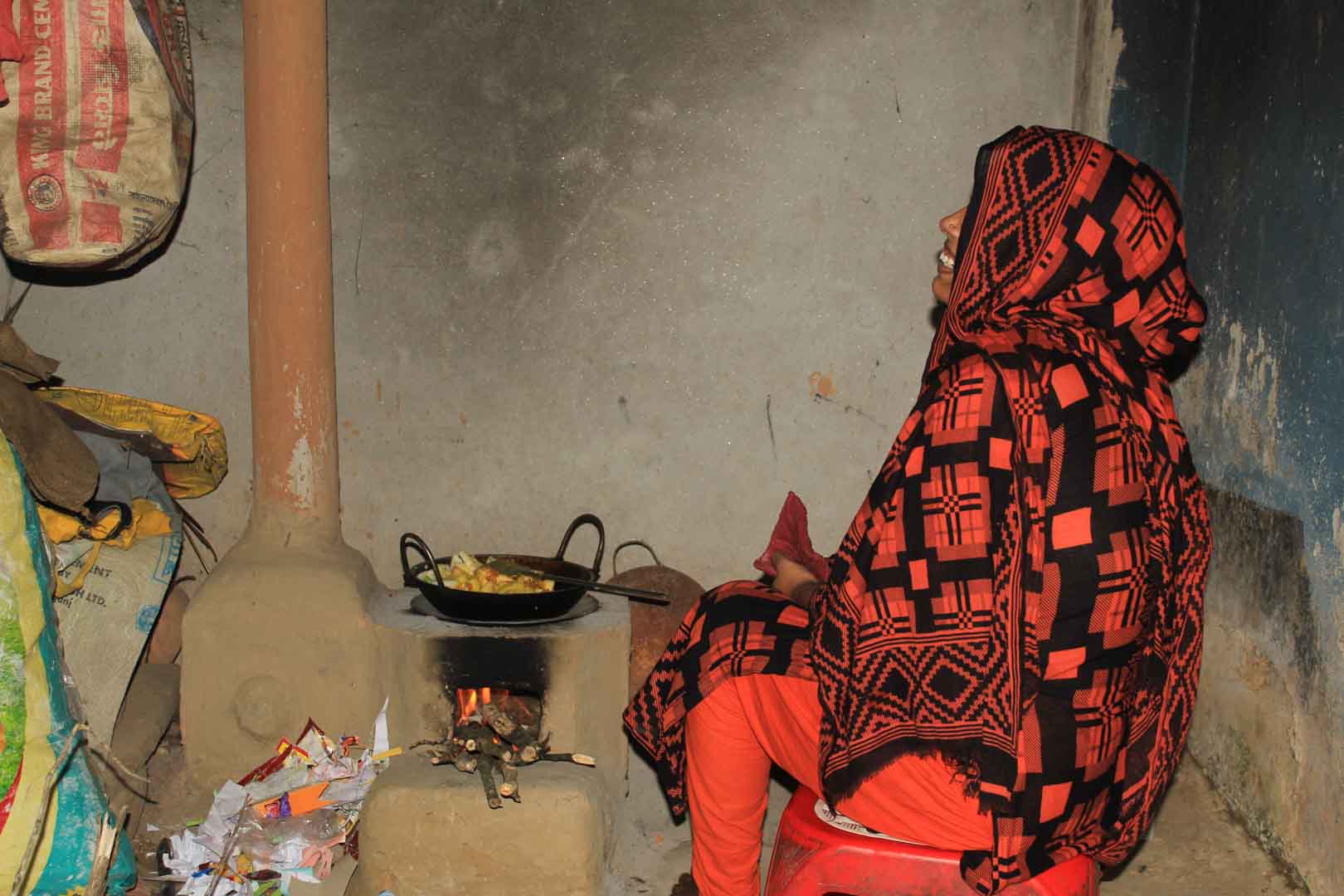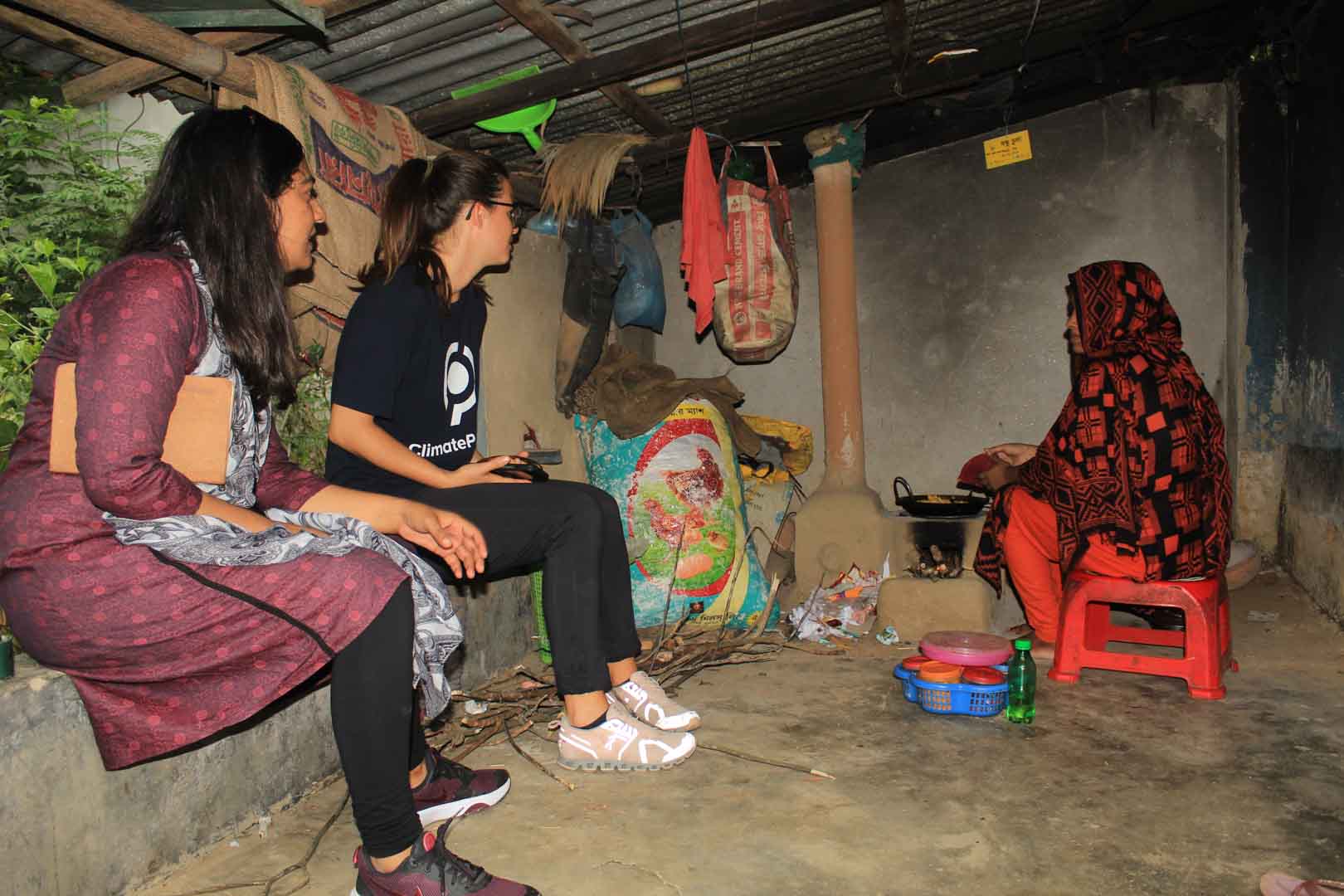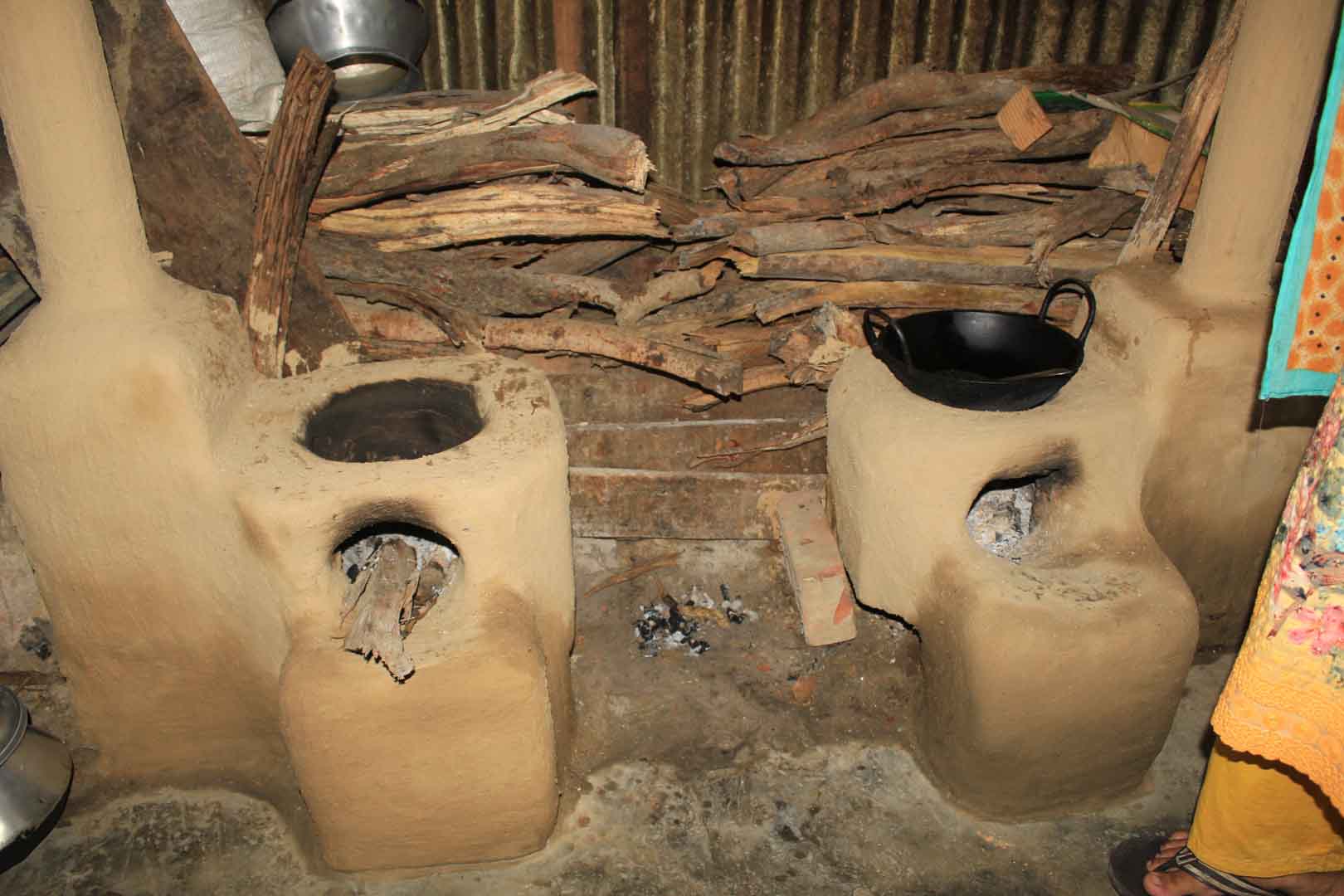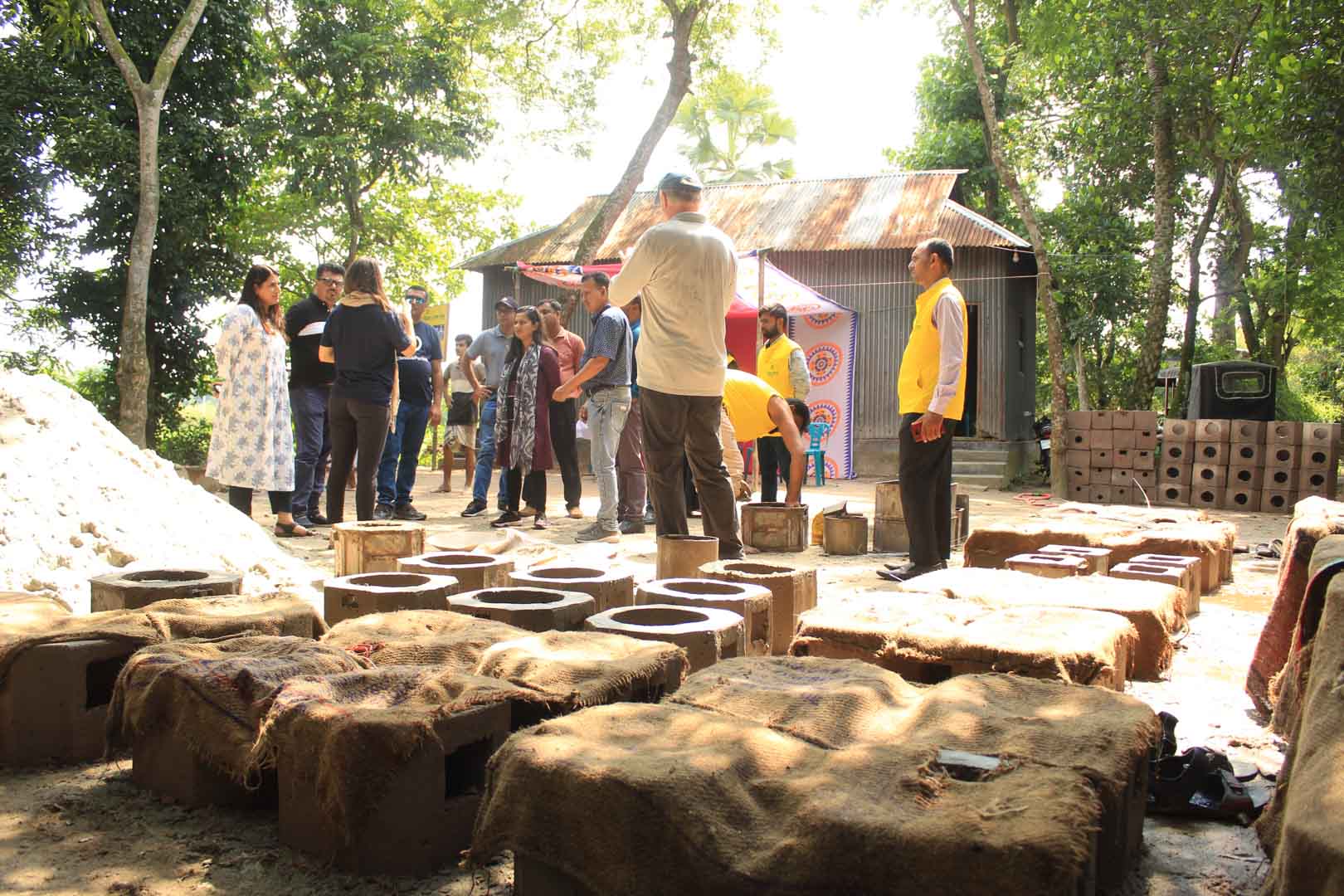Improved cookstoves benefit both health and the climate
In Bangladesh, the majority of the rural population uses traditional ineffective cookstoves to prepare their daily meals or cook over open wood fire, which leads to high raw material consumption and intensive indoor air pollution. The heavy smoke is responsible for many respiratory diseases, such as asthma and lung cancer. This mainly affects elderly people, women and children who spend traditionally more time at home and are exposed to the smoke for several hours a day. The use of inefficient cooking methods is thus not only releasing high amounts of CO2 emissions in the atmosphere but poses a serious health risk to the people in Bangladesh.
This climate project distributes the Bondhu Chula, meaning “friendly stove”, to people across the country. The efficient cookstoves need about 50 percent less fuel than traditional stoves to cook the same amount of food. With a chimney, cap and grates they are designed to reduce smoke and indoor air pollution.

According to a statistic from the World Health Organization (WHO, 2024) around a third of the global population still relies on unsafe and environmentally harmful cooking methods. This includes, for example, cooking over open fires or using polluting cooking fuels, such as coal or kerosene. Improved cookstoves tackle this problem by using thermal energy more efficiently.
Depending on the model, an improved cookstove can reduce fuel consumption by up to 70 percent, which significantly saves CO2 emissions and can lower the pressure on local forests as less firewood needs to be harvested.
Improved cookstove projects allow the distribution of the - often simple - devices made from metal or clay to households, small enterprises or community facilities. Especially for households, this has an impact beyond the CO2 reduction: better indoor air quality decreases respiratory diseases and families can save time and money as less fuel is needed. Improved cookstoves projects in the ClimatePartner portfolio are registered with international standards.
Explore our projects
Biochar for Climate Action, Healthy Soils, and Better Harvests
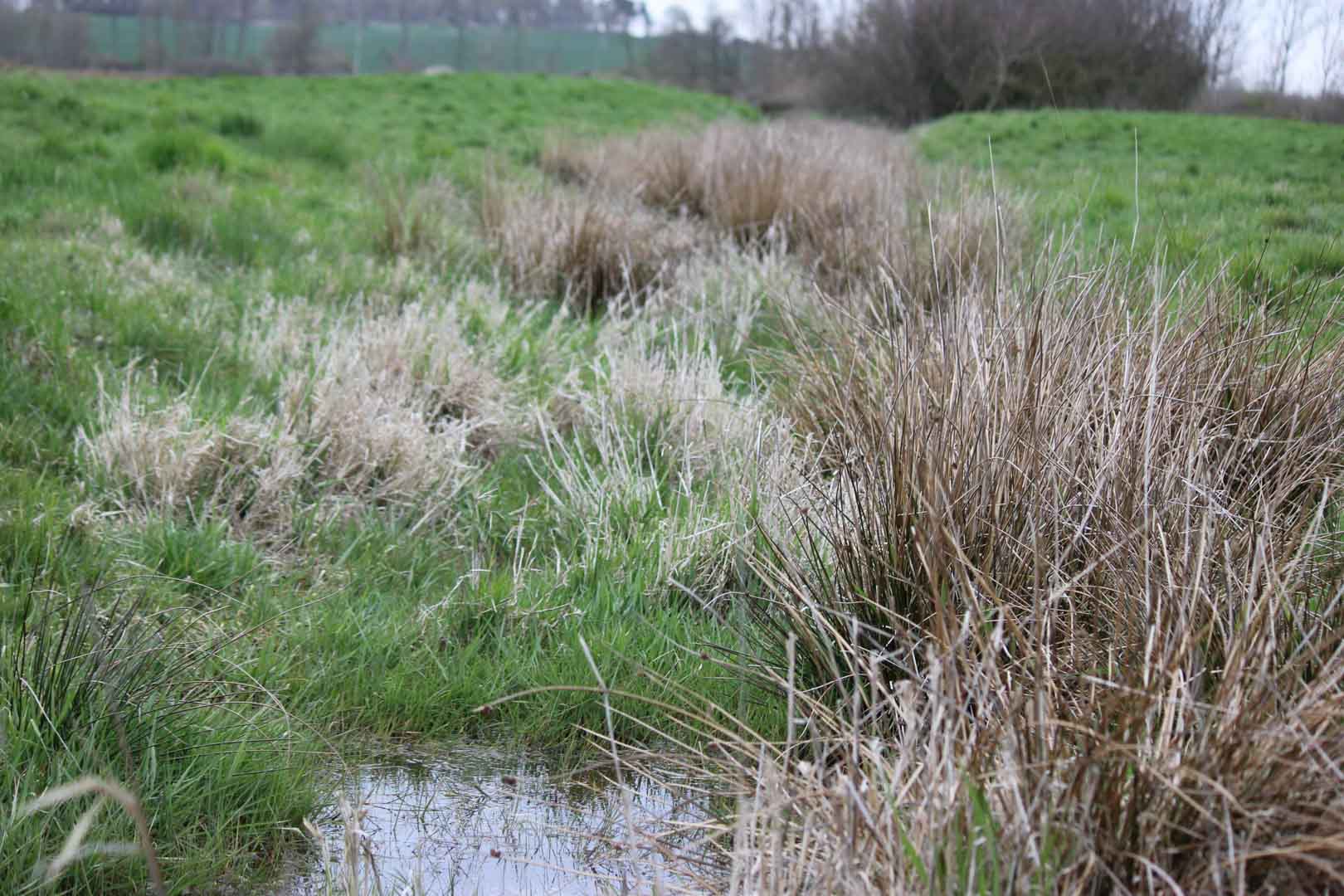
A certified climate project combined with additional commitment

Expansion of renewable energy generation in Asia
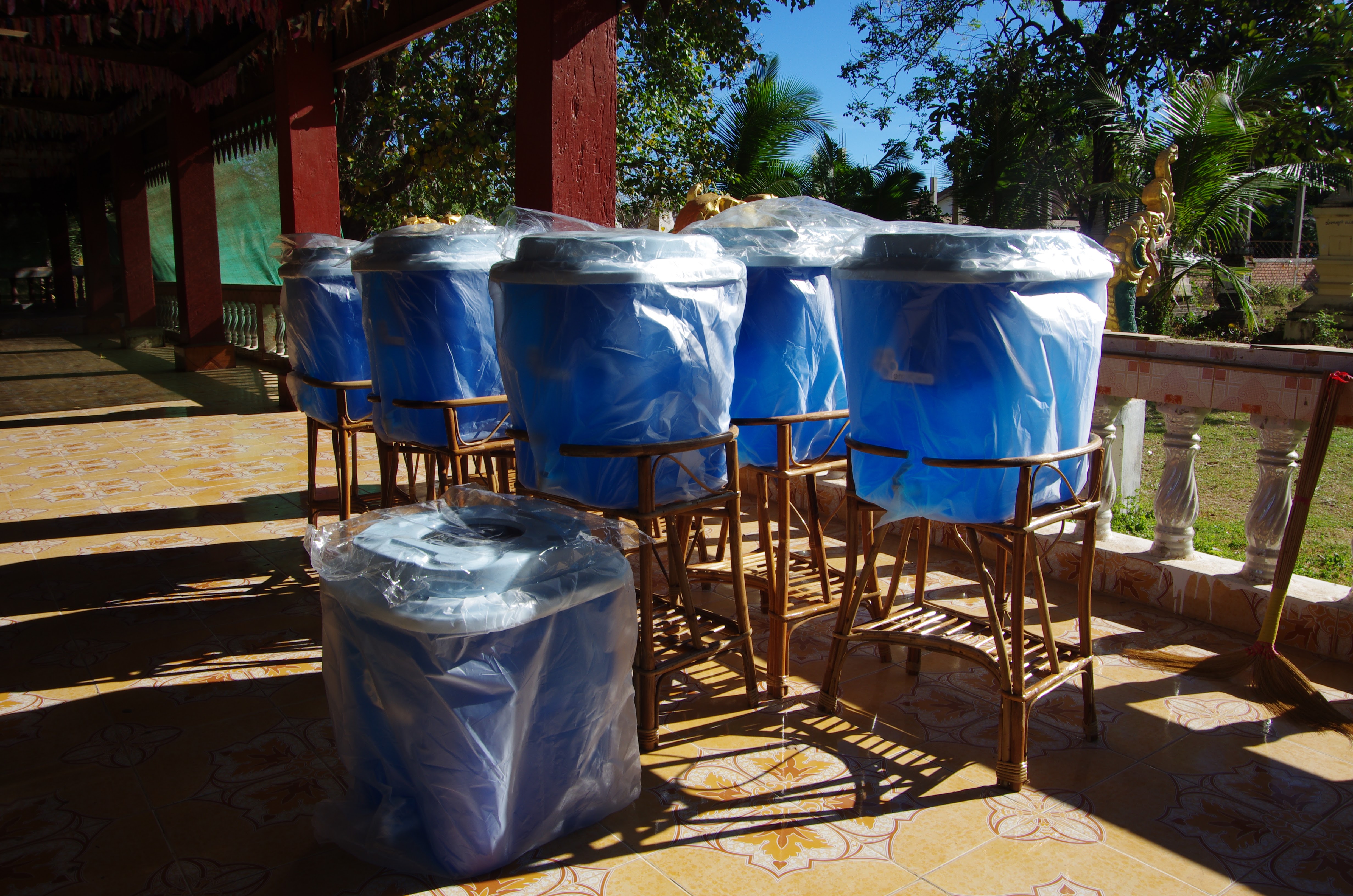
Ceramic water filters save CO2 and improve health

Improved cookstoves worldwide – for better health and cleaner air

A certified climate project combined with additional commitment
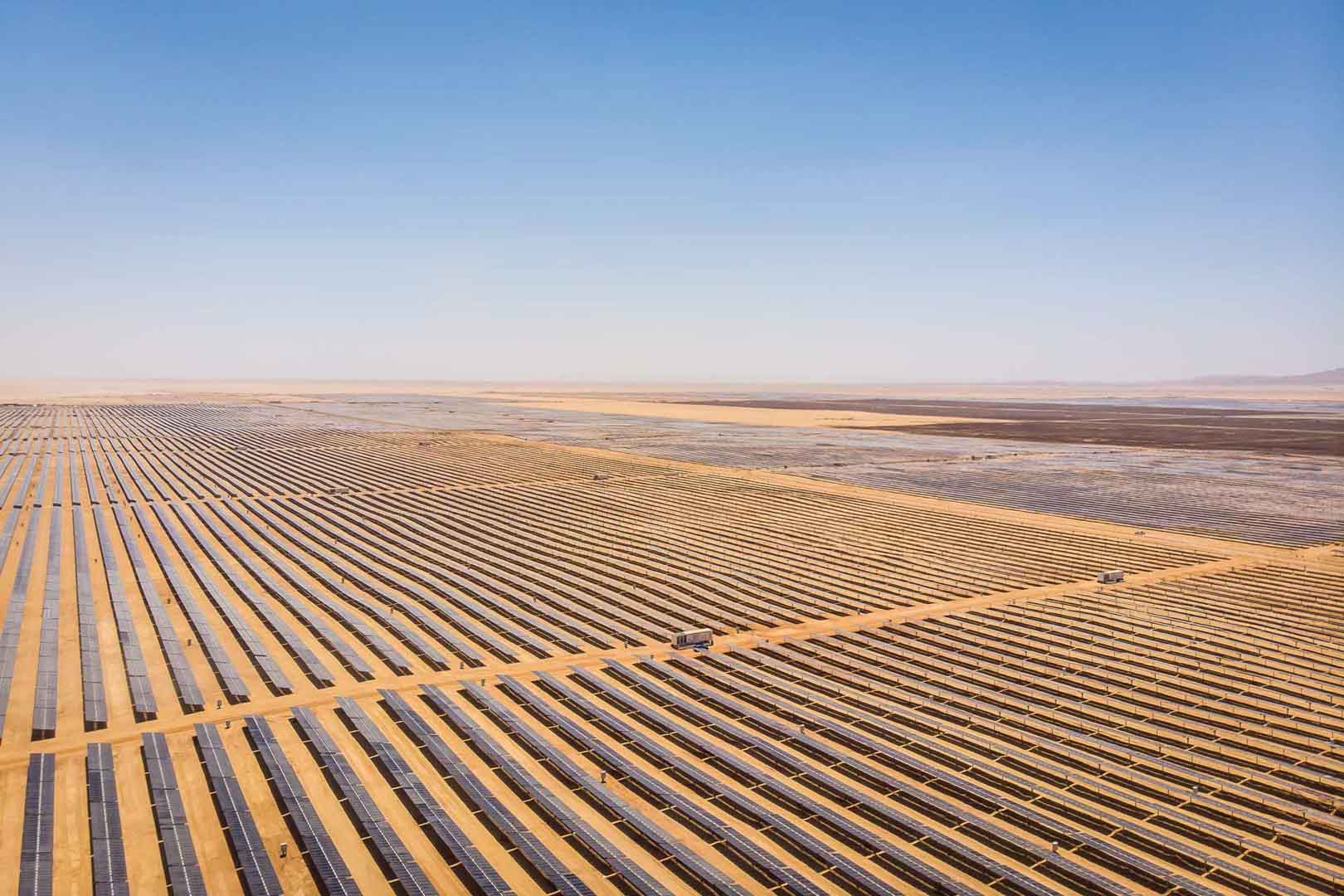
Powering access to renewable energy in Africa

A certified climate project combined with additional commitment

Restored ecosystems remove carbon
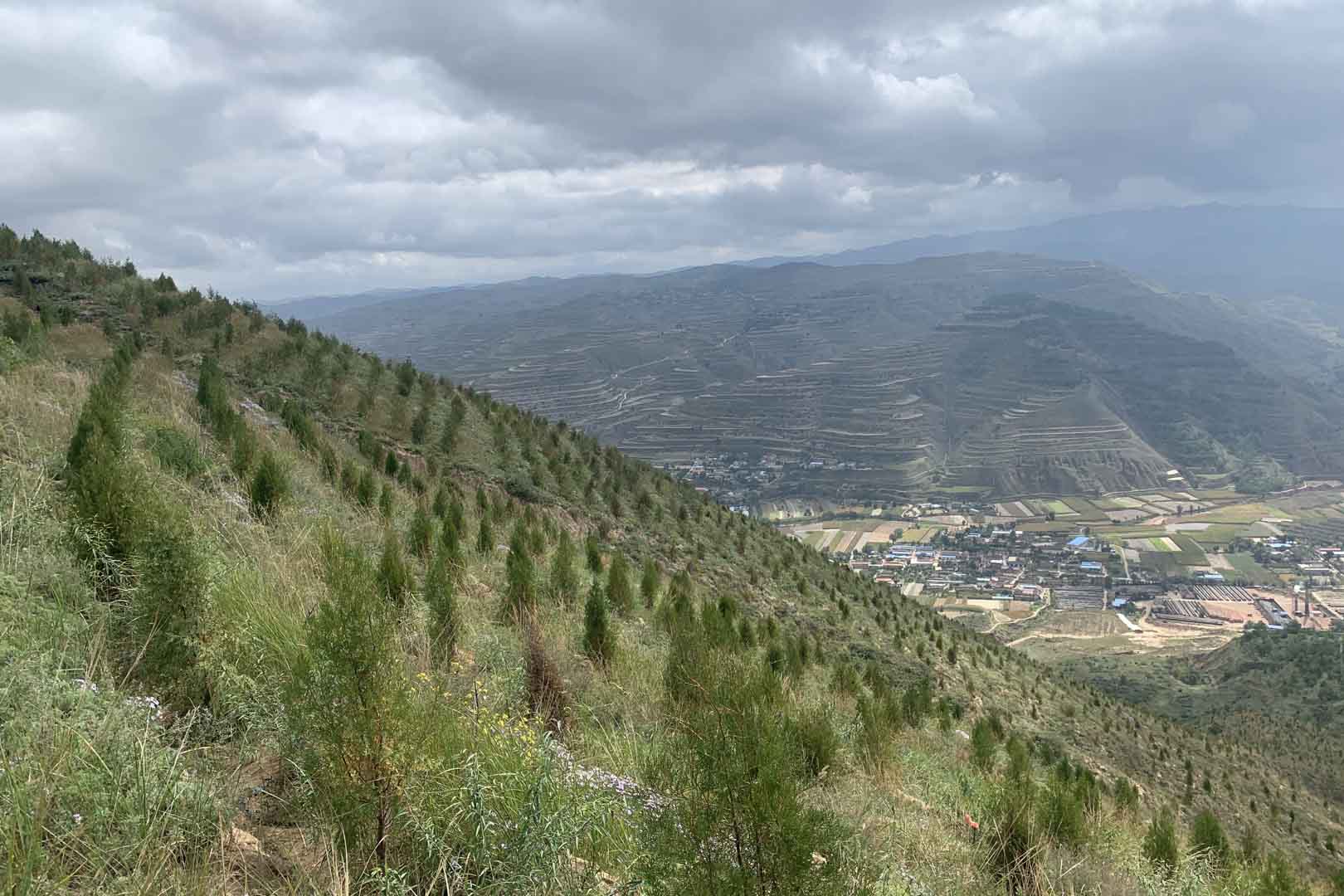
Turning degraded farmlands into healthy ecosystems

Improved cookstoves - better for health and the environment

